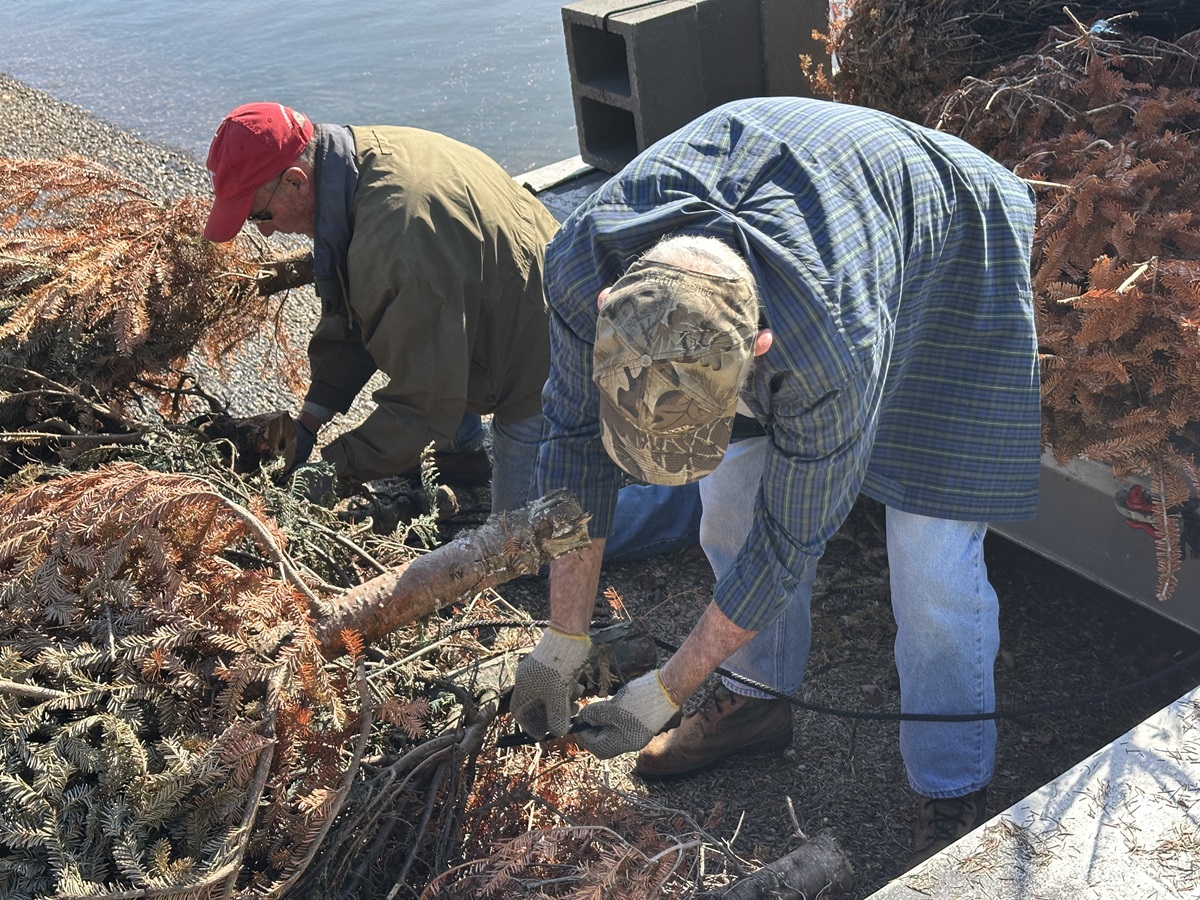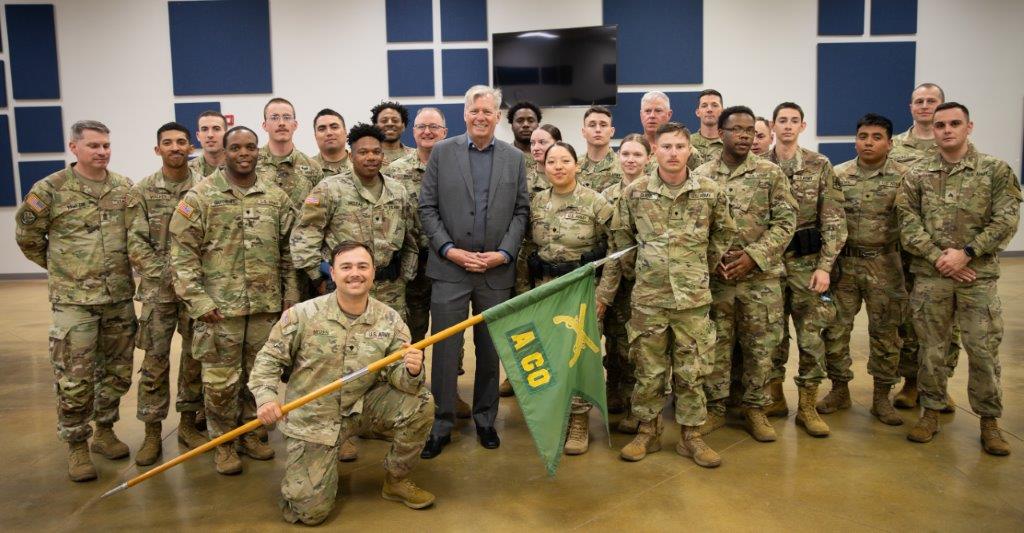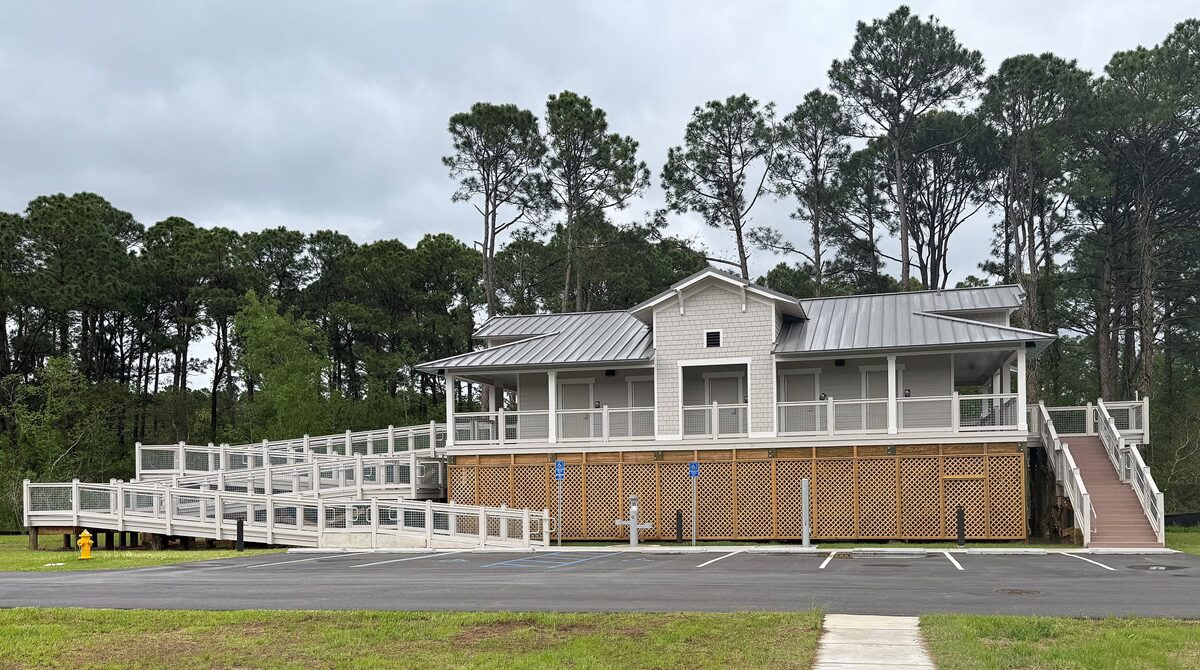Bryan Stevenson: 1963 bombing deaths, civil rights movement in Alabama changed the nation, world

The events that unfolded across the nation during the civil rights movement in Alabama captivated the nation and the world, said Bryan Stevenson, renowned attorney and founder of the Equal Justice Initiative in Montgomery, Alabama. A Montgomery resident, it has been Stevenson's lifelong mission to vindicate those who are wrongfully accused, particularly children and the young. Stevenson said he is grateful to those who came before him, who had the courage to fight for equal rights, in a battle that was not fair, was inconvenient and, more often than not, landed many activists in jail or prison. (Phil Free / Alabama News Center)
This story is part of a series of articles, “Bending Toward Justice,” focusing on the 60th anniversary of events that took place in Birmingham during 1963 that changed the face of the city, and the world, in the ongoing struggle for equality and human rights. The series name is a reference to a quote by the Rev. Martin Luther King Jr.: “Let us realize the arc of the moral universe is long, but it bends toward justice.” The series will continue through 2023.
The soul of the nation shuddered Sept. 15, 1963, at the bone-chilling news of the deaths of four little Black girls, killed during a senseless bombing in the name of racial segregation.
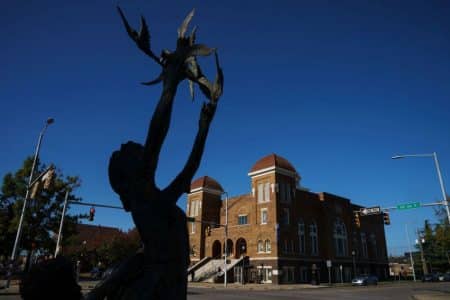
The ‘Four Spirits’ statue in tribute to the young girls killed in the Sixteenth Street Baptist Church bombing. (Drew Angerer / Getty Images)
Even more stunning was the news that young Addie Mae Collins, Denise McNair, Carole Robertson and Cynthia Wesley died during their morning prayers at Sixteenth Street Baptist Church in Birmingham, Alabama. The bombing shattered the century-old image of the church as a place of safety and a sanctuary for the Black community.
The heinous act changed the landscape of the civil rights movement, said Bryan Stevenson, founder and executive director of the Equal Justice Initiative (EJI) in Montgomery, Alabama, and a professor at New York University (NYU) School of Law. Stevenson, 63, works to protect the rights of the poor and oppressed, and has challenged bias against minorities and the poor in the criminal justice system, especially children.
“I think the implications of that moment are still with us today,” Stevenson said as he settled into a leather chair in the second-floor conference room of the remodeled EJI building, whose downtown views include the Alabama River, where enslaved Black people arrived via steamboat from Mobile and New Orleans to be sold at auction at Court Square and toiled on the docks when cotton was king. Behind him, hundreds of gold- and red-leather-bound tomes line nearly 50 wooden shelves – law books and references that Stevenson has used to help win the freedom of those who, in more recent times, were incarcerated after being unjustly accused and convicted.
“It was a really profound moment in American history that had broad implications for the entire world, not just the nation, because so many others were inspired by the activism,” he said. “So many things have changed as a result of those extraordinary days, months and years that took place in Alabama in the 1950s and 1960s and in Birmingham, particularly in 1963.”
The senselessness of the killings that took place on Sept. 15, 1963, reverberated around the globe. Reflecting on the 60th anniversary of that terrible day, Stevenson said the event had a lasting effect on foot soldiers of the civil rights movement.
“I think it’s important to note that, throughout most of the 20th century, we humiliated African Americans throughout most of the South,” he said. “I think that people tend to underestimate the harm that was created by Jim Crow laws and segregation. Being told that you’re not good enough to go through the front door and have to go through the back door; that you can’t drink this water; that you can’t be in the pool.”
There was a constant assault on Black people, he said. Many tried to navigate around the system, trying their best to not let it prevent them from advancing.
“But there was a point at which the obstacles became so burdensome that people were no longer willing to tolerate that kind of humiliation,” Stevenson said. “It was such an unhealthy world for everybody. … What is remarkable is that, in the 1950s, you began to see this growing frustration with the lived experience of being marginalized, excluded and humiliated, and I think it’s important that people understand that that was true for the entire African American community.

“Obviously in 1955, with the Montgomery Bus Boycott, you saw a community really rally around the idea of saying ‘no more,’” Stevenson said. “And if you listen to Dr. (Martin Luther) King’s speech on that organizing night, what got everybody to really respond was when he said, ‘We’re tired now.’ And it’s exhausting to have to navigate Jim Crow. It spread throughout the state of Alabama, it spread throughout the South.”
Social activists learned some lessons during the Montgomery Bus Boycott: To make change come about, it’s necessary to endure things that are hard and complicated, Stevenson said. The boycott lasted more than a year.
He noted that visitors to Montgomery are sometimes surprised at the size of the city when they consider the boycott – it’s not a tiny town where shops and businesses are one block away from each other. People who were boycotting stayed off the buses and committed to walking as many miles as it took to get to and from work.
“That’s extraordinary commitment,” Stevenson said. “It wasn’t comfortable, it wasn’t pleasant, it wasn’t easy, but they made that commitment because, in their heart, they were persuaded that injustice had to end. Segregation had to end.”
With the boycott’s success, many people began to think that they needed to push back against racial oppression in their communities, he said. It happened in Birmingham where the civil rights crusade took on new resonance following federal court rulings that struck down segregation in other elements of society, such as interstate transportation and commerce.
“Of course, there was tremendous resistance to that change. We saw that play out,” Stevenson said. “And the violence that surrounded activism, around racial apartheid, ending racial segregation, had been so much a part of the story for decades that I still marvel at the strength of Black families and activists and teachers and community leaders that committed themselves to not being turned around by threats and violence. That hadn’t been effective for a really long time.
“People were just saying ‘no more,’” he added, emphasizing the words with a slight turn of the swivel chair. “And I don’t think you can understand the courage and the power of the movement and the impact it had without understanding this really remarkable time in American history, when people simply said, ‘No more.’ No more can we tolerate this kind of bigotry, this kind of violence, this kind of injustice.”
Fight for civil rights in the South changed Stevenson’s path
Stevenson considers those events as critical to the trajectory of the lives of millions of Black Americans – including his own.
“So many things have changed as a result of those extraordinary days, months and years that took place in Alabama in the 1950s and 1960s and in Birmingham, particularly in 1963,” Stevenson said. “It’s important that people appreciate the remarkable achievement of civil rights activists in this state in the 1950s and 1960s because the radical change that occurred in society in America was achieved in a very atypical way. It was not achieved with political or military power; it was rooted in a kind of moral power.”
Stevenson was 3 years old when the bombing at Sixteenth Street Baptist took place, and grew up in Milton, Delaware, amid the turmoil and backlash that followed some of the pivotal moments of the modern civil rights movement in the deep South. At the time his father was growing up in Sussex County, Delaware, there was no high school for Black people. So, his father’s educational journey simply ended there.
“I lived in a community where most of the adults didn’t have high school degrees, not because they didn’t want them, not because they weren’t smart, not because they weren’t hard working – but that was an opportunity that had been denied them because of their color,” Stevenson said. “So, the lived experience of being marginalized was something that we very much understood and felt. … That reality was very clear to me as a young child, and I think we saw the activism in Birmingham and different places across the South as a wakeup call: ‘If it can happen there, it has to happen here.’”
Educational facilities were still essentially segregated in Sussex County as Stevenson reached school age. But Stevenson’s mother made him and his older brother, Howard, go to the white school a few months early, amounting to voluntary integration for his family.
“I started at the colored school, and then my mom took me over to the new school because she just wanted to be a part of this movement of pushing down these barriers,” Stevenson said. “I have a distinct memory of the excitement that took over the community, the pride that others around the country were pushing against these realities.”
That minor victory didn’t mean the struggle was over.
“All the Black kids that came from the colored school were put in the same grade and so, even though we were attending the same school, we were effectively segregated within that school,” he said. “I remember my mom pushing them to kind of change that and saying, ‘My kid should be in that other class, he wants to go to college.’ And those kinds of realities were very much a part of my early childhood. But it was all in response to what was happening in Birmingham, what was happening in Alabama.”
His mother, Alice, grew up in Philadelphia and was able to go to high school. She knew the value of education. Looking out their front door, the family didn’t see much opportunity. It was the same for other poor families in the racially segregated community.
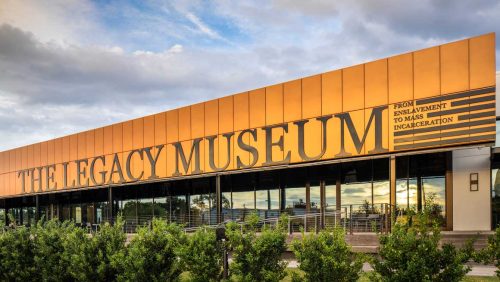
Stevenson is founder and executive director of the Equal Justice Initiative, which operates the Legacy Museum in Montgomery, Alabama. (contributed)
“I think about my parents and the sacrifices they made,” Stevenson said. “Mom went into debt when we were children to buy us the World Book encyclopedias … because inside those books, you could see a picture of a bigger world. I didn’t know or fully understand it.
“As a 10-year-old, you know, for Christmas you go outside and kids say, ‘I got a baseball, I got a basketball, I got a bicycle.’ And I’d have to say, ‘I got G and H of the World Book Encyclopedia,’” he added, with a laugh.
Recalling those early days, Stevenson equates the trials and frustrations as being part of his family’s DNA in helping create a bigger picture of the world. In a sense, his mother was passing on the love of reading that her own mother had bestowed on her. Stevenson’s grandmother had worked her whole life as a domestic servant, but she believed in the power of reading.
Indeed, those encyclopedias were the gateway to a bright new world.
“I never imagined I’d become a lawyer; I never imagined that I’d have the opportunity to do any of the things I’ve had an opportunity to do,” Stevenson said. “It was just kind of a step-by-step process. But when I think about it, in hindsight, I do believe that I was prepared by my family, by my community and even in the church where I sang in the choir. … There were not safe places to stand up and say something, but in the church, you had that.”
Most recently, Stevenson has begun sharing stories about his family. Despite his great-grandfather being enslaved in the 1850s in Virginia Beach, Virginia, he learned to read and write, though anti-literacy laws made it dangerous for enslaved people.
“He learned to read … because he had a dream that he’d be free one day. Now, that wasn’t a rational dream,” Stevenson said. “But when emancipation came, he was able to help people because he knew how to read. And my grandmother told me that people would come to their house once a week, and my great-grandfather would stand on the front porch and read the newspaper for the whole community of people who didn’t know how to read, so they could know what was going on.
“And she loved the power he had, just being able to read like that,” he said. “And I think, again, that this created this legacy of yearning for knowledge, seeing the power that is within knowledge and information. And he obviously gave that to my grandmother; she gave it to my mom, and my mom gave it to me.”
Looking to a bright future
Stevenson is excited about his work at the EJI and teaching his law classes, mostly about trying to share ideas about activism with a generation of young people. He believes that it’s critically important for young people to understand the power behind their history.
“I want them to know about the tremendous resilience, perseverance, faith, hope, love, the capacity to endure,” Stevenson said. “We inherited those components of this history, just like our grandparents had to deal with the legacy of all that pain and agony. And if you understand that, then you begin to know that there are real barriers that can keep you from doing the things that you need to do and you must be committed to tearing down those barriers.”
He tells his NYU law students that it takes more than ideas to change and improve the world; sometimes it takes endurance, not unlike the activists who rebelled against racial segregation during the Montgomery Bus Boycott.
“I’m ultimately persuaded that we change the world with the conviction in our heart that it’s important to have a relationship with those that suffer, to those who are struggling, to those that are excluded and marginalized,” Stevenson said. “And to have some motivation that empowers you to do things that are hard and difficult. Because during the civil rights movement, no one knew when they started marching that things were going to change, and that bigotry was going to end. We look back on it and we say, ‘That’s amazing.’ But they didn’t know what the outcome would be.”
Stevenson said that learning should be an action item. In his view, when we learn things about our prisons and jails and why they’re struggling, we’ll be better positioned to respond to the problems. When we learn about hunger, we learn about the structural barriers that keep people in places where they can’t survive or succeed.
It is time to change the narratives that persuade society that we can’t do anything about the problems, he said.
“I think about Alabama, and we’ve been consistently one of the poorest states in the country for decades,” Stevenson said. “Some would say there’s nothing we can do about that. I don’t believe that’s true. I don’t think we have to accept having the highest poverty rates in the country. I think there are absolutely things we could do to lower the poverty rate, to improve health outcomes for poor families, to reduce food insecurity.
“If we accept these narratives that say, ‘that’s the way it’s always going to be,’ then we won’t get there,” he added. “So, changing the narratives that root you in ignorance or dysfunction, fear or failure, is really important.”
Finding home in the South
Stevenson spoke about the many ways the civil rights movement has freed both Black and white people, providing the chance to live one’s best life.
“We get to experience things that are wonderful and joyful and beautiful, that we would never be experiencing today but for that activism,” he said. “We love football in Alabama, and we have legitimate pride in our college football teams and when they play those games in Birmingham, between Auburn and Alabama, you’re looking at some of the best college athletes in the country competing and hundreds of thousands of people are cheering for different teams. It’s something that we can all be excited about.”
He noted that, also in 1963, Alabama Gov. George Wallace tried to keep Black students from attending the University of Alabama, and consequently, Black athletes from participating on its athletic teams.
“We would not be experiencing the pride and the success in these championships without that activism,” he said.
Stevenson takes pride in the museum and memorial operated by EJI in Montgomery, which draws hundreds of thousands of people to the city each year. It is something he couldn’t have imagined doing 35 years ago. He is excited to see the changes, and doors opening for the Black community.
“There are still challenges, but this is home for me, and I rush to get back home when I’m traveling, because there are things that are important to me here,” said Stevenson, a Montgomery resident since the mid-1980s. On the other hand, “There’s still a need to get to that next level, and I’m excited to do what we can to help advance that. But I think that we have an opportunity to not just help Montgomery, but to help the whole world continue to recover from all the damage that was done with this long history of racial injustice.
“I think we’re uniquely positioned in Alabama to lead in that effort, because we were in many ways associated with the worst parts of that harm. I think we’re well-positioned to be leaders to show the rest of the country what it takes to recover, to repair, to reconcile, to restore, to redeem.
“And those beautiful words, I think, can have a power in our community that is unmatched in this country,” Stevenson said. “That’s what excites me about living and working in Montgomery.”










